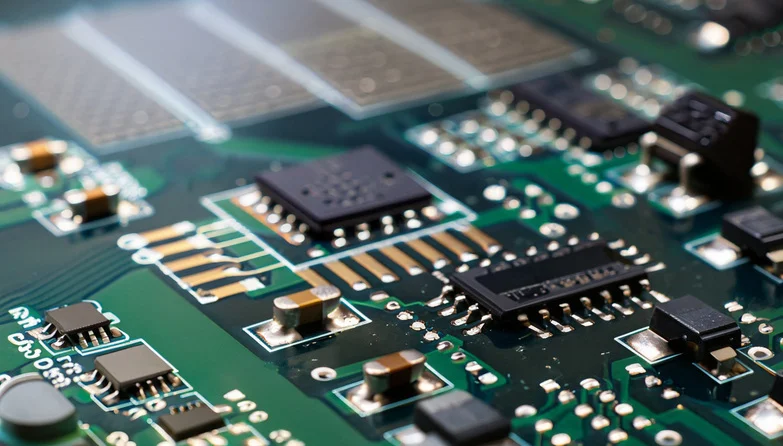Component shortages have become a significant challenge for financial hardware PCB manufacturing, disrupting production timelines and increasing costs. In this blog, we’ll explore how these shortages impact the industry and provide practical mitigation strategies to overcome PCB component sourcing challenges, including finding alternative parts for financial PCBs, managing lead times in PCB manufacturing, optimizing your BOM for financial hardware, and building a resilient PCB supply chain. Let’s dive into actionable solutions to keep your projects on track.
Understanding the Impact of Component Shortages on Financial Hardware PCB Manufacturing
Financial hardware, such as ATMs, point-of-sale terminals, and banking systems, relies heavily on printed circuit boards (PCBs) for functionality. These devices demand high reliability, precision, and security, often requiring specialized components like high-speed microcontrollers, secure memory chips, and robust power management ICs. However, global supply chain disruptions, driven by factors like geopolitical tensions, raw material scarcity, and increased demand for electronics, have led to widespread component shortages since 2020.
The impact on financial hardware manufacturing is profound. Delays in sourcing critical components can stall production, leading to missed deadlines and lost revenue. For instance, a shortage of a specific microcontroller with a required clock speed of 100 MHz can halt the assembly of an entire batch of payment terminals. Additionally, costs often spike as manufacturers scramble to secure scarce parts from secondary markets at inflated prices—sometimes 200-300% above standard rates. This not only affects profitability but also strains relationships with clients who expect timely delivery of secure, high-performance hardware.
Beyond delays and costs, component shortages can compromise quality. When original parts are unavailable, manufacturers may resort to untested substitutes, risking compatibility issues or failures in high-stakes financial environments where downtime can cost millions. With these challenges in mind, let’s explore strategies to mitigate the impact of shortages and maintain smooth operations.
Strategy 1: Tackling PCB Component Sourcing Challenges with Diversified Supplier Networks
One of the most effective ways to address PCB component sourcing challenges is by diversifying your supplier network. Relying on a single supplier or region for critical components leaves your production vulnerable to localized disruptions, such as factory shutdowns or shipping delays. Instead, build relationships with multiple suppliers across different geographies to spread the risk.
For financial hardware, where components like secure cryptographic chips or high-frequency oscillators (e.g., 25 MHz for data processing) are often in short supply, having backup suppliers can be a lifesaver. Start by identifying alternative distributors who stock similar parts and maintain open communication to secure priority access during shortages. Additionally, consider partnering with local suppliers for faster turnaround times, even if their prices are slightly higher, to avoid long international shipping delays.
Another tip is to leverage online component marketplaces and databases that provide real-time availability updates. These platforms can help you quickly locate stock for urgent needs, reducing downtime. By spreading your sourcing across multiple channels, you create a safety net that keeps your production line moving, even in the face of unexpected shortages.

Strategy 2: Finding Alternative Parts for Financial PCBs Without Compromising Quality
When original components are unavailable, finding alternative parts for financial PCBs becomes essential. However, substituting parts in financial hardware is not as simple as swapping one resistor for another. These systems often require components with specific electrical characteristics, such as low-noise amplifiers for signal integrity or capacitors with precise impedance values (e.g., 50 ohms for high-frequency circuits).
To identify suitable alternatives, start by consulting the datasheets of the original components and comparing their specifications—such as voltage ratings, thermal tolerance, and pin configurations—with potential substitutes. Use design software tools to simulate how a replacement part will perform in your circuit before committing to a purchase. For example, if a specific 3.3V regulator is out of stock, look for another with identical output current capacity (e.g., 500 mA) and dropout voltage to ensure compatibility.
Additionally, work closely with your design team to prioritize components with broader availability during the initial design phase. Opt for parts with multiple manufacturers or generic equivalents rather than niche, single-source options. This proactive approach minimizes the risk of shortages derailing your project and ensures that alternatives won’t compromise the security or performance of financial hardware.
Strategy 3: Managing Lead Times in PCB Manufacturing for Timely Delivery
Long lead times are a direct consequence of component shortages, making managing lead times in PCB manufacturing a critical focus for financial hardware producers. Lead times for certain semiconductors have stretched from a typical 8-12 weeks to over 30 weeks in recent years, according to industry reports. This delay can be catastrophic when clients expect rapid deployment of devices like cash dispensers or transaction terminals.
To manage extended lead times, start by forecasting demand more accurately. Use historical sales data and market trends to predict component needs for the next 6-12 months, and place orders well in advance. For high-demand parts like memory chips with specific read/write speeds (e.g., 3200 MT/s for DDR4 modules), consider bulk purchasing to secure inventory, even if it ties up capital temporarily.
Another approach is to maintain a strategic buffer stock of critical components. While holding excess inventory carries storage costs, having a reserve of essential parts can prevent production halts during unexpected delays. Finally, collaborate with your PCB assembly partner to prioritize flexible manufacturing schedules, allowing you to adjust production based on component arrival rather than sticking to rigid timelines.

Strategy 4: BOM Optimization for Financial Hardware to Reduce Risks
A well-optimized Bill of Materials (BOM) is a powerful tool for mitigating shortage risks, especially when focusing on BOM optimization for financial hardware. An optimized BOM not only lists all required components but also includes fallback options and prioritizes parts with stable supply chains, reducing the likelihood of production bottlenecks.
Begin by auditing your current BOM to identify single-source components or those with historically long lead times. For instance, if your financial hardware relies on a specific FPGA with limited suppliers, research comparable chips from other manufacturers with similar processing capabilities (e.g., 500K logic elements) and add them as alternates in the BOM. This ensures you’re not caught off guard if the primary part becomes unavailable.
Next, streamline your BOM by consolidating similar components where possible. If multiple circuits use resistors of slightly different values (e.g., 1kΩ and 1.2kΩ), consider standardizing to a single value that meets design requirements across the board. This reduces the variety of parts you need to source, simplifying procurement and lowering the risk of shortages. Regularly update your BOM based on supplier feedback and market availability to keep it aligned with current conditions.
Strategy 5: Building a Resilient PCB Supply Chain for Long-Term Stability
Ultimately, the goal is to create a resilient PCB supply chain that can withstand disruptions and ensure consistent production of financial hardware. A resilient supply chain is built on proactive planning, strong partnerships, and adaptability to changing market dynamics.
Start by fostering long-term relationships with key suppliers. Open communication and mutual trust can secure priority access to components during shortages, giving you an edge over competitors. For example, regularly sharing your production forecasts with suppliers allows them to plan inventory allocation, reducing the risk of unfulfilled orders for critical parts like high-voltage transistors used in power circuits (e.g., rated for 60V).
Investing in technology is another way to enhance resilience. Use supply chain management software to track component availability in real time and receive alerts about potential disruptions. These tools can also help identify alternative suppliers quickly, minimizing delays. Additionally, consider regionalizing parts of your supply chain to reduce dependence on international shipping, which can be affected by port congestion or geopolitical issues.
Finally, adopt a mindset of continuous improvement. Regularly review and stress-test your supply chain to identify vulnerabilities, such as over-reliance on a specific component type or supplier. By addressing these weaknesses before they become problems, you position your business to thrive, even in challenging times.
Conclusion: Navigating Component Shortages with Confidence
Component shortages pose a serious threat to financial hardware PCB manufacturing, causing delays, cost increases, and quality risks. However, by implementing the strategies outlined above—diversifying supplier networks, finding alternative parts for financial PCBs, managing lead times in PCB manufacturing, focusing on BOM optimization for financial hardware, and building a resilient PCB supply chain—you can mitigate these challenges and maintain production stability.
At ALLPCB, we understand the unique demands of financial hardware manufacturing and are committed to supporting our clients through innovative solutions and reliable partnerships. By staying proactive and adaptable, you can turn the challenge of PCB component sourcing challenges into an opportunity to strengthen your operations for the future.
 ALLPCB
ALLPCB








